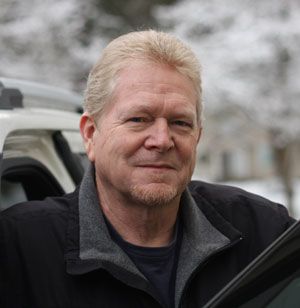Room for improvement
Regarding the safety of driverless cars, experts agree that they are not infallible. Those experts and captains of the auto industry also agree that people are not infallible either, and that driving errors are likely to be fewer in vehicles operating with autonomous, as opposed to human, control.
That’s one universal agreement that is propelling driverless auto development. We all know there is room for improvement in virtually every driver. Cars without drivers may fulfill that potential improvement.
For example, I’ve regularly heard criticism of drivers who “race” from one light to the next, without regard for when the lights are turning red or green. Driverless vehicles will eliminate that behavior. Smart grids will allow those vehicles to link with stop lights, other vehicles or anything else in their paths. As a result, the vehicle can calculate an optimum speed to hit green lights. Additionally, it will be able to set up the most efficient braking for any red lights, stop signs or obstacles encountered.
Many two-lane head-on collisions result when drivers inadvertently cross the center line due to drowsiness, drunkenness or distraction. Autonomous vehicles will simply never do that.
Driverless cars, communicating with a smart grid, will know the location and degree of every upgrade and downgrade, allowing them to make appropriate gearing adjustments resulting in improved fuel economy.
Whereas human drivers often come upon traffic jams, accidents, construction and other impediments without warning, autonomous cars and trucks will be capable of avoidance by analyzing real-time traffic data from other vehicles and the grid.
Future vehicles will monitor speed limits, and not exceed them. In fact, per their programming, they will not break any laws, unless necessary to avoid accidents.
Since they will not speed, follow too closely, turn into the wrong lane, or go the wrong way on a one-way street, their citable infractions should be nil. That will undoubtedly have ramifications on law enforcement revenue and judicial system loads.
Those consequences were noted by reader J.B., who wrote, “With the improvements in lane-keeping, front-end collision warning/avoidance, rear-view visibility/collision avoidance, etc., becoming steadily more prevalent among more and more car models, it is likely that the incidence of collisions and their attendant damage to vehicles and people will progressively decrease. If there are fewer accidents, the effects on areas of the economy could be significant. As an example, I read a piece by a judge in SC recently on what he sees as the impacts on the court system in his jurisdiction. In his court, a majority of the judges and court staff are devoted to traffic issues. He foresees the need for a lot of court personnel, at all levels, to find something else to do in a few years. Not to mention the attorneys, their staffs, bail bondsmen, etc. The effects overall, while beneficial to society at large, could be pretty significant for those who currently make their living from the effects of car accidents and affected driving.”
Even when a crash is unavoidable — after all, there will still be human drivers around when driverless cars debut — a driverless car is capable of evaluating many factors per microsecond, and choosing an eventual course of action that will result in the least mayhem and death.
The improved safety of future cars, driverless or not, will lower accident rates. Whatever form those cars take, they will help rectify a need for improvement in human drivers.
Readers may contact Bill Love via email at precisiondriving@spokesman.com.
